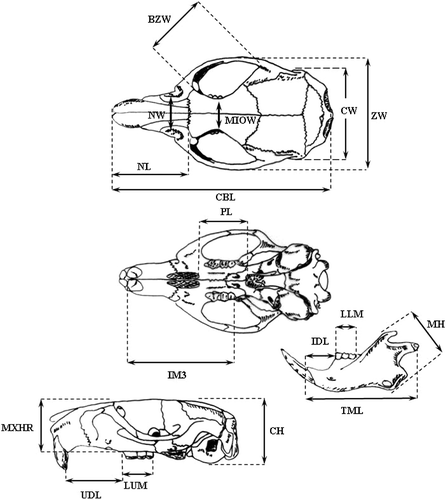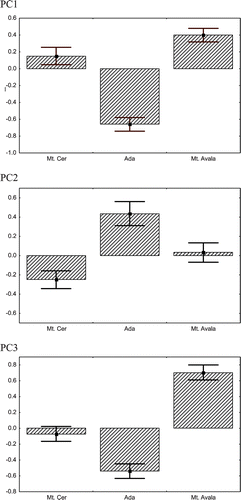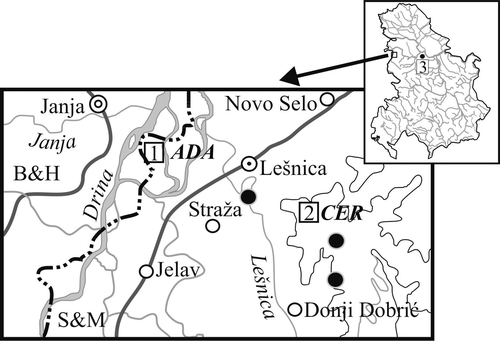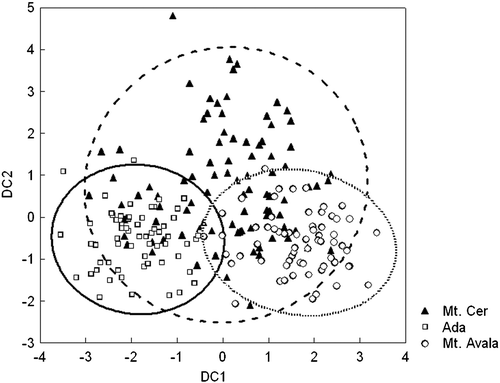Figures & data
Figure 2 Linear measurements taken on each skull ofApodemus flavicollis (CBL, condylobasal length; ZW, zygomatic width; NL, nasal length; CW, cranial width; BZW, bizygomatic width; NW, nasal width; MIOW, minimum inter‐orbital width; IM3, distance from the 3rd upper molar to the upper incisor; PL, palatal length; UDL, upper diastema length; LUM, length of upper molars; MXHR, maximum height of rostrum; CH, cranial height; TML, total mandible length; IDL, inferior diastema length; MH, mandible height; LLM, length of lower molars).

Table I. Eigenvectors of the first three principal component (PC) scores based on 16 cranial and mandible variables in Apodemus flavicollis. The variables are arranged after their principal component loadings.
Figure 3 Principal component scores(mean±SE with 95% confidence limits) for the three populations studied.


